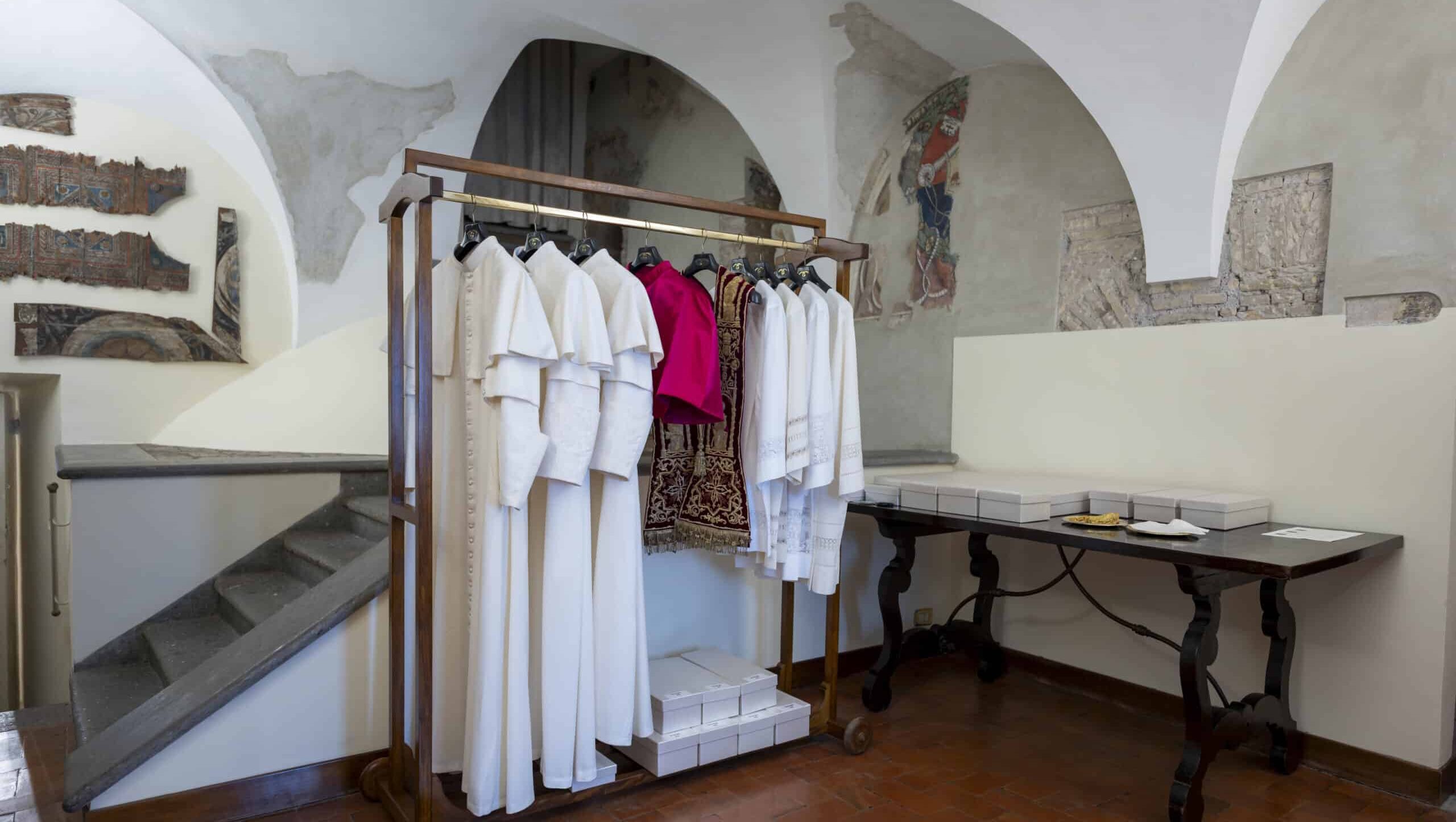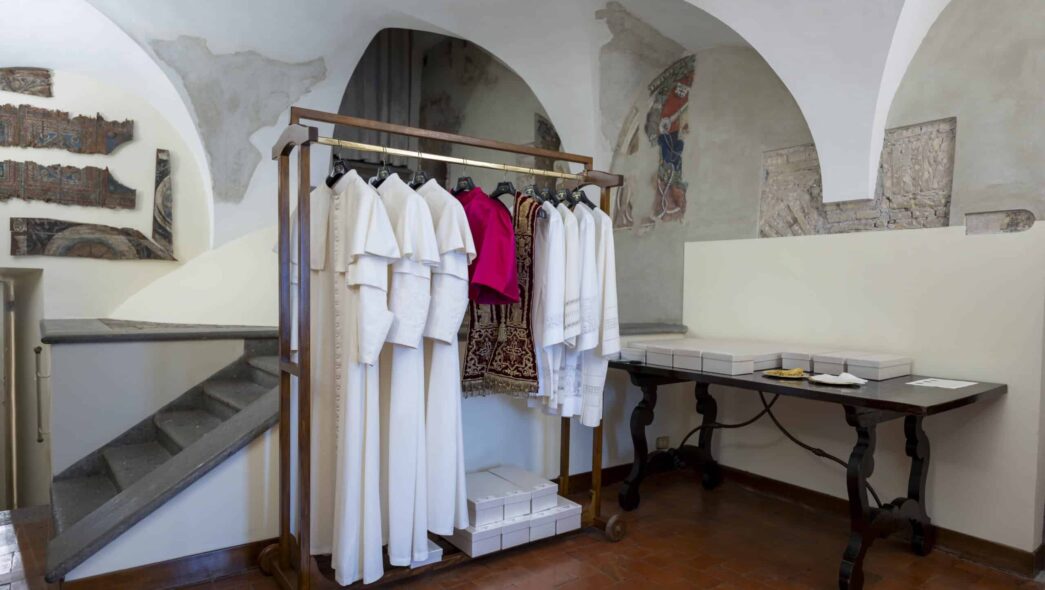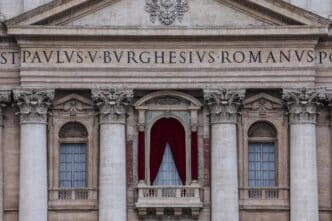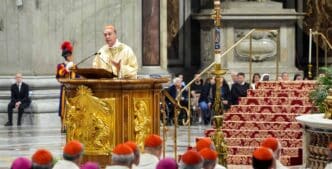On the way to my cousin’s wedding in southern Germany, my parents and I squeezed in a few days of sightseeing in Rome. It was my first visit to the Eternal City, and the Vatican Museums were a must-see. We wound our way through the galleries, marveling at tapestries and maps, and then — thanks to a very generous friend — found ourselves in the very heart of the Vatican: near the Sistine Chapel. There, we stepped into a place I never expected to see in person.
Marching to the front of the chapel, to the left of the altar, under Michelangelo’s fresco of the Last Judgment, I pressed a button to ring a bell. A panel in the famous fresco opened and we walked through.
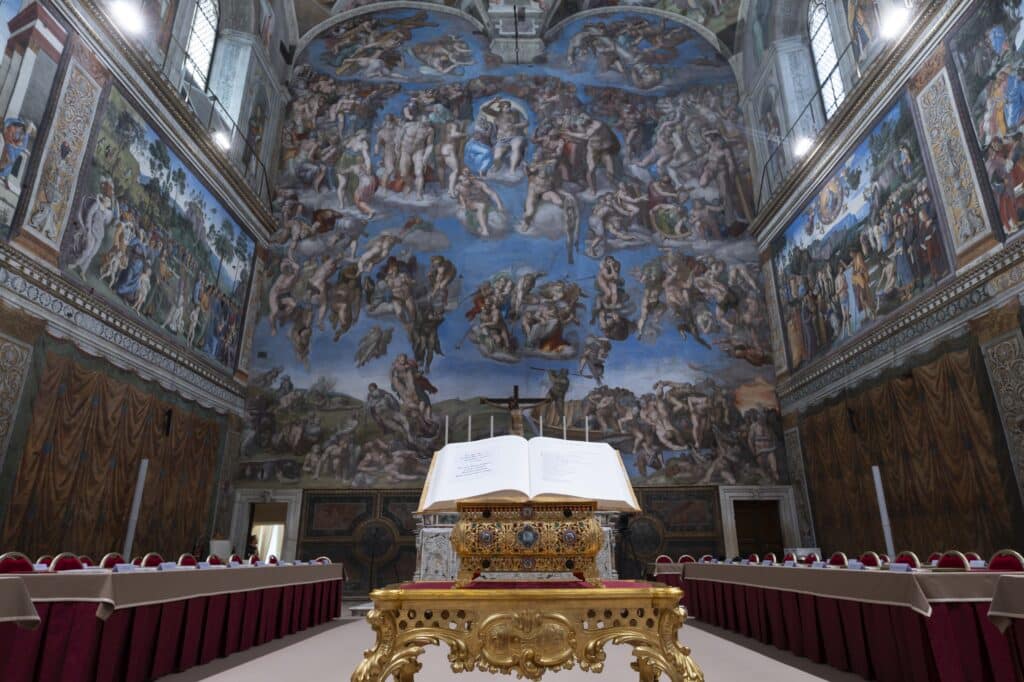
What was the room? It was the Room of Tears.
Despite the dramatic name, it’s not much more than a landing in a stairwell: quiet, plain, functional. But the space bears immense spiritual weight. The Room of Tears is the chamber where the newly elected pope goes immediately after accepting the papacy during a conclave. It’s where he dons the white cassock for the first time before stepping out onto the balcony of St. Peter’s Basilica.
It’s also a place where many newly elected popes have wept. Hence the name.
Accepting an immense responsibility
We were told the tears come from the weight of it all — the immensity of being entrusted with the care of over a billion souls.
There’s the story of Pope Leo XIII — 68 years old when he entered the 1878 conclave, leaning on a cane — who, upon being elected, reportedly burst into tears and declared, “I’m too old for this. I’m going to die.” He lived to be 93.
When John XXIII caught sight of himself in full papal white (which didn’t quite suit his round frame, despite the strategic use of safety pins), he purportedly looked in the mirror and chuckled, “This man will be a disaster on television!”
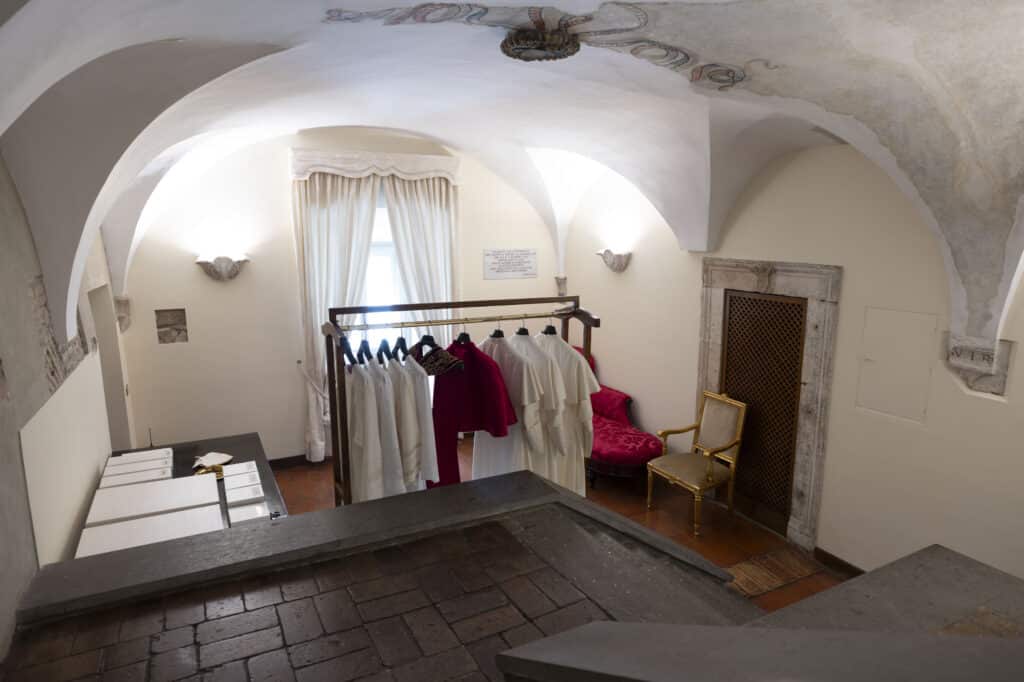
Having accepted his election, Pope John Paul I — who would reign for only 33 days — said to another cardinal as he walked to the Room of Tears, “May God forgive you for what you have done in my regard.”
Standing there, the room didn’t feel heavy so much as hushed. You don’t expect the past to be so quietly present.
A place for prayer
Just off the Room of Tears, behind a chapel and other rooms, was a small display about the conclave. Capsules containing the chemicals used to color the smoke were on view. Next to this stood a simple desk, the very desk where Cardinal Jorge Mario Bergoglio sat moments before stepping onto the loggia as Pope Francis.
The desk still holds the items he would have seen that evening: a register for tracking ballots cast, the Liturgy of the Hours, and a copy of Universi Dominici Gregis, the apostolic constitution that governs papal elections.
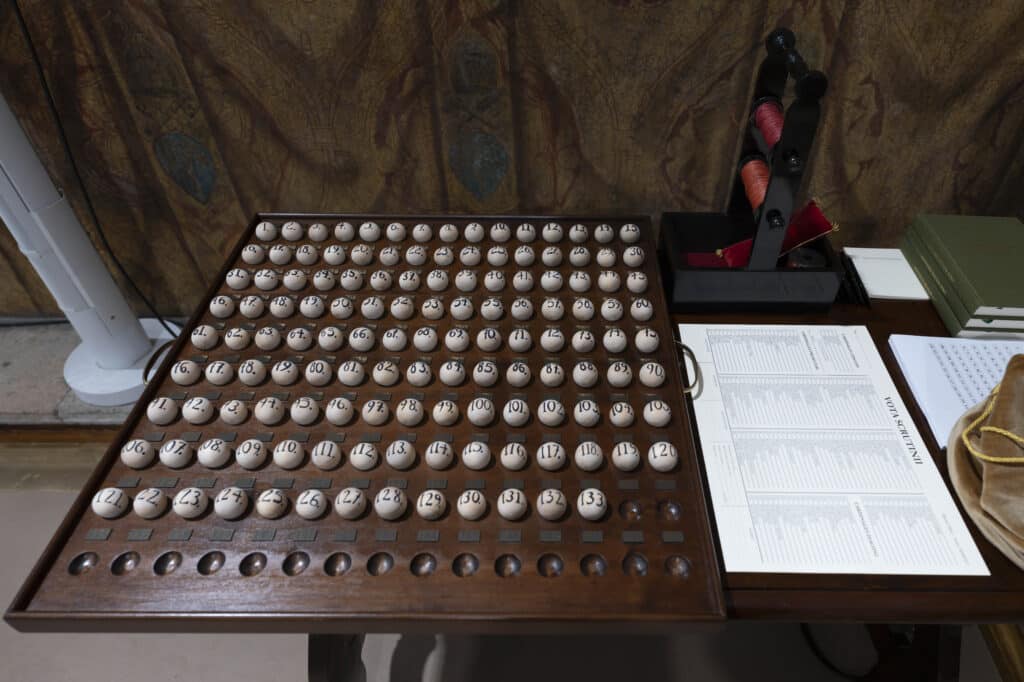
A kneeler stands ready for a moment of prayer. There is a couch for a moment of rest. The whole place is subdued, underwhelming, as if to remind the new Holy Father that before the cameras, the crowds, and the headlines, this moment is just between him and God.
We lingered in the room longer than I expected, quietly taking it in.
On the way out, I whispered a prayer — not just for the popes who’ve wept in that room, but for all of us who are asked, in our own ways, to say yes to God’s call.
Today, I am praying for the 267th pontiff, whoever he will be.

